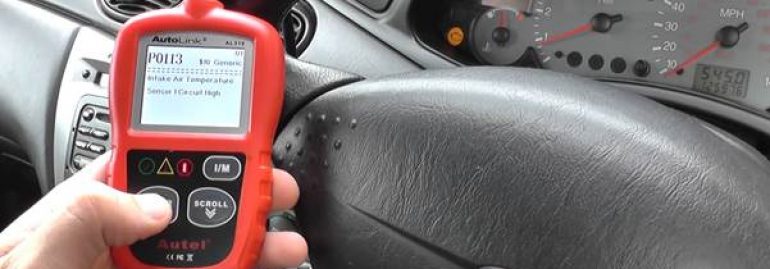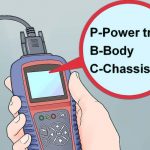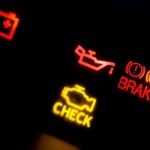Welcome to the ultimate guide on OBD2 codes – your key to unlocking the secrets behind your car’s trouble codes. If you’ve ever experienced that sinking feeling of seeing a “check engine” light appear on your dashboard, you’ll know just how frustrating it can be when you don’t understand what’s wrong with your vehicle.
But fear not, because this comprehensive list and guide will equip you with the knowledge to decipher those mysterious codes and empower you to diagnose and troubleshoot issues like a pro. So, get ready to delve into the world of OBD2 codes as we unravel their significance and provide expert tips on maintaining peak performance for your beloved automobile.
What are OBD2 Codes and how do they work?
What are OBD2 Codes?
- OBD2 codes, short for On-Board Diagnostics 2 codes, are diagnostic trouble codes that provide information about issues or problems with a vehicle.
- These codes are generated by the car’s onboard computer system and correspond to specific faults detected in various components of the vehicle.
- Each code consists of a unique combination of letters and numbers, which can be deciphered to identify the exact area or system where the problem resides.
How do they work?
- When a problem occurs in a vehicle’s system or component, sensors detect it and send signals to the car’s computer.
- The computer then analyzes these signals using pre-programmed algorithms to determine if there is an issue that needs attention.
- If an issue is identified, the computer generates an OBD2 code based on its database of potential faults and malfunctions.
- These codes can be retrieved using an OBD2 scanner or code reader tool connected to the car’s diagnostic port.
- Once you have obtained the codes, you can refer to resources like our Ultimate OBD2 Codes List & Guide for detailed explanations and solutions related to each specific code.
Understanding OBD2 codes allows you to pinpoint potential problems with your vehicle before they escalate into costly repairs. By decoding these trouble codes accurately, you gain valuable insights into what might be causing performance issues in your car.
Understanding the Different Types of OBD2 Codes
Types of OBD2 Codes
There are three main types of OBD2 codes: generic, manufacturer-specific, and enhanced.
- Generic Codes: These are standardized codes that are the same for all makes and models of vehicles. They provide basic information about a specific problem or issue.
- Manufacturer-Specific Codes: These codes are unique to each car manufacturer and can vary widely. They provide more detailed information about specific problems related to a particular make or model.
- Enhanced Codes: These codes go beyond the basic diagnostic information provided by generic and manufacturer-specific codes. They offer advanced troubleshooting capabilities and access to additional data points.
Understanding these different types of OBD2 codes is essential in diagnosing car troubles accurately. It helps mechanics pinpoint issues efficiently based on whether they need general knowledge or if they require specific details related to a particular make or model.
Decoding OBD2 Codes: A Step-by-Step Guide
Understanding and decoding OBD2 codes can be daunting at first, but with a step-by-step guide, it becomes much easier. Here’s how to decode those trouble codes:
- Retrieve the codes: To start, you’ll need an OBD2 scan tool or code reader. Plug it into your car’s diagnostic port (usually located under the dashboard) and follow the instructions to retrieve the stored trouble codes.
- Interpret the codes: Once you have retrieved the codes, consult a reliable OBD2 code list or database for their meanings. Each code consists of five alphanumeric characters – usually starting with a letter followed by four numbers. The letter identifies which system of your vehicle is experiencing a problem while the numbers provide specific information about the issue.
- Determine severity and urgency: Not all trouble codes are created equal. Some indicate minor issues like loose gas caps, while others signal more serious problems that require immediate attention, such as misfires or catalytic converter failure.
Remember that diagnosing and fixing car troubles should be done with caution and expertise if you lack experience in automotive repair.
Common OBD2 Codes and Their Meanings
One common OBD2 code is the P0300, which indicates a random misfire in the engine. This can be caused by issues such as faulty spark plugs, fuel injectors, or a clogged fuel filter. It’s important to address this code promptly to prevent further damage to the engine.
Another frequently encountered code is the P0420, which points towards a problem with the catalytic converter. This may be due to issues like a failed oxygen sensor or an exhaust leak. If left unaddressed, it can lead to decreased fuel efficiency and increased emissions.
Additionally, the P0171 code refers to a lean condition in the engine’s air/fuel mixture. Causes for this could include vacuum leaks, a malfunctioning mass airflow sensor (MAF), or a faulty oxygen sensor. It’s crucial to resolve this issue as running too lean can result in engine damage over time.
Remember to consult your vehicle’s specific manual or an expert mechanic for assistance when troubleshooting these codes.
How to Interpret OBD2 Codes and Troubleshoot Issues
When it comes to interpreting OBD2 codes, there are a few key steps you need to follow. First, you’ll need an OBD2 scanner tool, which can be purchased online or at auto parts stores. Once you have the tool, simply plug it into your car’s diagnostic port located under the dashboard.
Once connected, the scanner will display a unique code that corresponds to a specific issue within your vehicle. To interpret this code, refer to your car’s service manual or search for the corresponding code online using reputable resources like manufacturer websites or automotive forums.
After deciphering the code, troubleshooting becomes easier because you can identify what needs fixing in your car. Whether it’s a faulty sensor or an engine-related problem, knowing precisely what’s wrong enables you to take appropriate action faster – saving time and money on unnecessary repairs.
Remember that while getting the code is essential for troubleshooting purposes; it doesn’t always pinpoint exactly what needs replacement or repair. Additional diagnostics may still be required by trained professionals with specialized equipment when tackling more complex issues.
Advanced Tips and Tricks for Using OBD2 Codes
Understanding Manufacturer-Specific Codes
In addition to generic codes, your car’s onboard diagnostics system may also provide manufacturer-specific codes. These codes give more specific information about the issue and can be identified by starting with a letter instead of a number. It’s important to consult your vehicle’s owner manual or search online resources to decipher these codes accurately.
Interpreting Pending Codes
When you scan your vehicle for trouble codes, you may come across “pending” codes. These are potential issues that haven’t caused the check engine light to illuminate yet. While not as urgent as active trouble codes, pending codes shouldn’t be ignored either. Addressing them promptly can prevent future problems and costly repairs.
Storing Freeze Frame Data
Freeze frame data captures crucial information about your vehicle at the time an error code was recorded. This includes engine speed, coolant temperature, and fuel trim values among others. By accessing this data along with the fault code, mechanics can gain further insights into diagnosing complex issues accurately. Make sure to document or take a picture of freeze frame data before clearing it from memory for better troubleshooting in case multiple errors occur simultaneously.







What kind of diagnostic/code reading tool is best for me myself as a D.Y.I. “backyard mechanic”
to purchase?
I obviously prefer to purchase the most informative tool that will help me diagnose older or newer vehicle problems/issues regarding my various cars/trucks ranging from luxury cars thru my 3 work trucks containing both gasoline and diesel engines!!
I’m not wealthy, but I will spend descent money on a tool that is worth its weight concerning less head scratching/confusing issues that create headaches from over spending due to so many possibilities that “could be one of the parts of many” that will remedy the problem……
Been there, done that way to many times, so please steer me in the right direction professionally please 🙏!!!!!
Thank you, Jeff
Jefflapham123@gmail.com
I have a 2003 Chevrolet Suburban that is not sending out any readout information to a working code reader when I have tried several times to plug it in, but after trying it in other various vehicles and it works fine in them, but once plugged into my Suburban, nothing….. not a darn thing registers on the reader!! LOL
HELP ME PLEASE 🙏